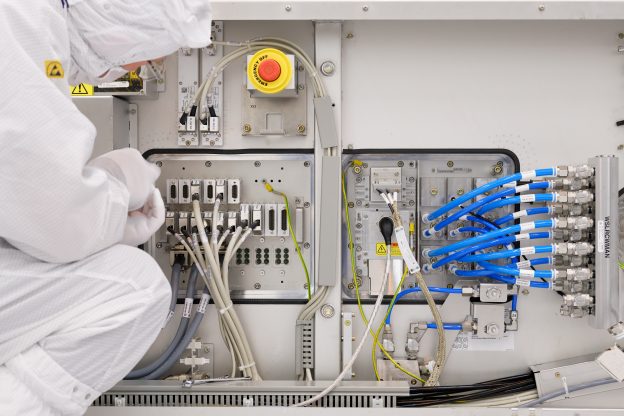Popular Keywords
- About Us
-
Research Report
Research Directory
Semiconductors
LED
Consumer Electronics
Emerging Technologies
- Selected Topics
- Membership
- Price Trends
- Press Center
- News
- Events
- Contact Us
- AI Agent
About TrendForce News
TrendForce News operates independently from our research team, curating key semiconductor and tech updates to support timely, informed decisions.
- Home
- News
[News] ASML Tools Reportedly Exempt from U.S. Tariff, Easing Costs for Intel, Samsung, and TSMC

According to a report from Tom’s Hardware, the trade agreement signed earlier this week between the U.S. and the President of the European Commission introduces a 15% tariff on European-made goods entering the U.S. However, certain categories—such as semiconductor manufacturing equipment—are exempt under a zero-for-zero tariff arrangement. This means tools from companies like ASML will not face price increases in the U.S.
As the report points out, a 15% tariff on ASML’s tools would have significantly raised costs for U.S. chipmakers—by around USD 13 million per DUV system and up to USD 40 million per EUV machine. For advanced fabs built by Intel, Samsung, and TSMC, this could amount to hundreds of millions in added costs. Such increases would have undermined the global competitiveness of U.S.-based semiconductor manufacturing and discouraged further investment, as the report notes.
In addition to chipmaking equipment, the report also highlights that other strategic products covered by zero-for-zero tariffs include all aircraft and components, certain chemicals, generic medicines, agricultural goods, natural resources, and critical raw materials, according to a statement from the European Commission cited in the report.
ASML’s EXE:5200 Shipment and High-NA EUV Adoption Timelines Among Industry Giants
In its latest earnings call, ASML announced it has shipped the first EXE:5200—a next-generation High-NA EUV system designed for high-volume manufacturing. ASML’s first High-NA EUV customer is confirmed to be Intel, which plans to use the technology for its 14A node, according to Tweakers. While ASML has been delivering EXE:5000 systems since 2023 for test production and R&D, the shipment of the first EXE:5200B marks a key transition—High-NA EUV is now officially ready for volume manufacturing, as per the report.
On the other hand, Wccftech suggests that TSMC may delay its adoption of High-NA EUV, as the company is expected to skip the tool for its A14 process node. According to TSMC’s roadmap, A14 is scheduled to enter mass production in 2028. Meanwhile, Business Post reports that Samsung has yet to set a timeline for adopting High-NA EUV, though it is considering the technology for sub-2nm processes.
Read more
- [News] ASML Confirms First High-NA EUV EXE:5200 Shipment, Reportedly Prepping for Intel’s 14A in 2027
- [News] ASML Warns of Stalled 2026 Growth as Geopolitical Risks Threaten Decade-Long Run
(Photo credit: ASML)





